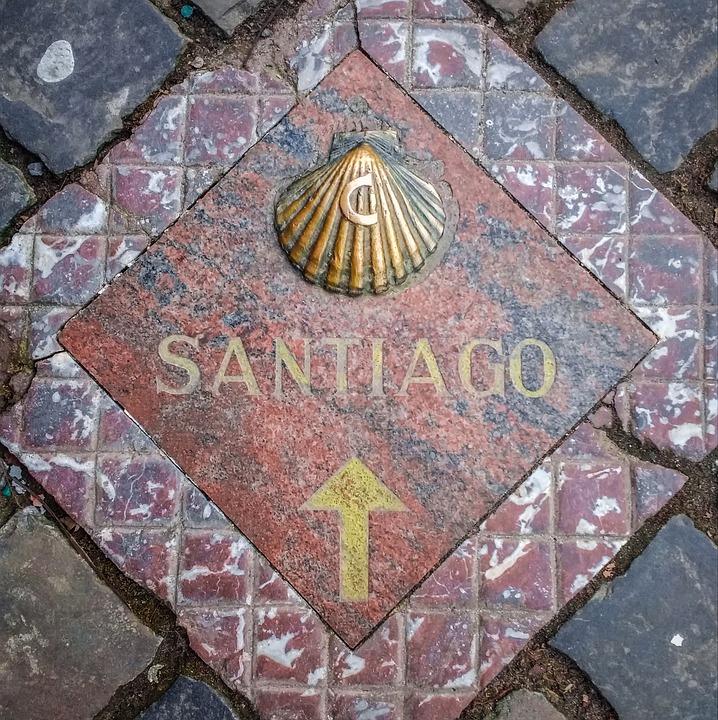Introduction
Nestled in the lush green landscapes of Spain’s northwest, Santiago de Compostela is a hidden gem waiting to be discovered. Known as the final destination of the famous pilgrimage route, the Camino de Santiago, this charming city offers a rich blend of history, culture, and spirituality.
The Pilgrimage of a Lifetime
For centuries, pilgrims from all walks of life have embarked on a transformative journey to Santiago de Compostela. The Camino de Santiago attracts thousands of individuals seeking spiritual growth, adventure, or simply a chance to reconnect with nature. The city’s magnificent Cathedral of Santiago de Compostela beckons pilgrims as the ultimate reward for their arduous journey. The sight of the cathedral’s grand façade, towering spires, and the Botafumeiro (a powerful incense burner) swinging high above the congregation during the Pilgrim’s Mass is an awe-inspiring experience that leaves visitors in awe.
A Living Museum of History
Steeped in history, Santiago de Compostela is a living museum waiting to be explored. The UNESCO-listed Old Town (Casco Antiguo) is a labyrinth of winding alleys, cobblestone streets, and picturesque squares. Stroll through the Plaza del Obradoiro, the city’s main square, and marvel at the architectural wonders that surround you. The historic buildings, such as the Palacio de Rajoy and the Hostal dos Reis Católicos, showcase a mix of Romanesque, Gothic, and Baroque styles.
Culinary Delights and Heavenly Tastes
Santiago de Compostela offers food enthusiasts a delightful gastronomic experience. The city is renowned for its fresh seafood, hearty Galician cuisine, and fine wines. Indulge in traditional dishes such as pulpo a la gallega (Galician-style octopus), empanada (savory pie), and tarta de Santiago (almond cake). Don’t forget to pair your meal with a glass of crisp Albariño wine, produced in the region’s lush vineyards.
Showcasing Cultural Charms
Beyond its spiritual and historical appeal, Santiago de Compostela boasts a vibrant cultural scene. The city comes alive during festivals, particularly during the Feast of St. James (July 24th). Streets burst with color, music, and dance as locals and visitors celebrate with traditional Galician music, folklore performances, and lively processions. The Galician Center of Contemporary Art (CGAC) and the Museum of the Galician People provide a glimpse into the region’s unique culture and artistic heritage.
Exploring Natural Beauty
Santiago de Compostela’s natural beauty is a sight to behold. Surrounding the city, verdant landscapes offer endless opportunities for exploration. Take a scenic hike through the Monte do Gozo (Mount Joy) for breathtaking views of the city and the distant mountains. Explore the nearby Rías Baixas, a series of fjord-like coastal inlets that boast breathtaking scenery, pristine beaches, and charming fishing villages.
FAQs Section
Q: How can I reach Santiago de Compostela?
A: Santiago de Compostela is easily accessible by air, train, or bus. The city has an international airport (SCQ) that connects it to major European hubs. The railway station offers high-speed connections to key Spanish cities, including Madrid and Barcelona.
Q: Is Santiago de Compostela safe for solo travelers?
A: Yes, Santiago de Compostela is generally considered safe for solo travelers. The city’s welcoming atmosphere, well-preserved historic center, and efficient public transportation make it an ideal destination for individuals exploring on their own.
Q: Can I explore the Camino de Santiago without embarking on the entire pilgrimage?
A: Absolutely! Many visitors choose to experience sections of the Camino de Santiago without committing to the entire pilgrimage. You can opt for day hikes or shorter multi-day walks, allowing you to immerse yourself in the Camino’s spirit while tailoring the journey to your preferences.
Q: What is the best time to visit Santiago de Compostela?
A: The best time to visit Santiago de Compostela is during spring (April to June) and autumn (September to October) when the weather is pleasant and the city is less crowded. Summer (July to August) can be hot and crowded, while winter (December to February) can be chilly and rainy.
Q: Are there accommodation options for different budgets?
A: Yes, Santiago de Compostela offers a wide range of accommodation options to suit different budgets. From luxury hotels to charming guesthouses and budget-friendly hostels, there is something for every traveler. It’s advisable to book in advance, especially during the peak pilgrimage season.

